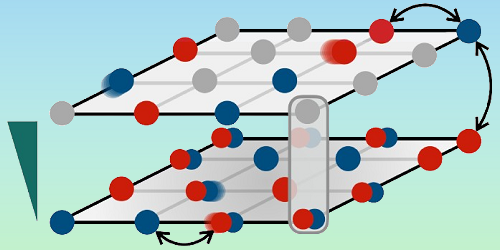Simulating Superconductivity in Optical Lattices
Certain materials become superconducting when their electrons pair up. This phenomenon is well understood in conventional superconductors, which operate only at extremely low temperatures. But it remains obscure in some unconventional superconductors, which can function at surprisingly high temperatures. Now Henning Schlömer at the University of Munich and his colleagues have proposed a method to investigate electron behavior in these high-temperature superconductors using a quantum simulator based on atoms arranged in lattices of laser light [1].
Scientists modeling high-temperature superconductors using atoms in optical lattices face two main challenges. First, to replicate the quantum effects responsible for electron pairing in these materials, the atoms typically must be cooled to near absolute zero, which requires advanced cooling techniques. Second, to probe these quantum effects, pairs of atoms must be added to and removed from the optical lattice while keeping the system in a well-defined, ordered quantum state. Schlömer and his colleagues present a way to overcome these problems when simulating two key classes of high-temperature superconductors: cuprates and nickelates.
The researchers propose to model cuprates and nickelates using single-layer and bilayer optical lattices, respectively. These lattices contain particular configurations of atoms, atom vacancies, and bound atom pairs, which can interact with each other in only specific ways. Schlömer and his colleagues show how such precise setups could be used to model electron behavior in cuprates and nickelates without requiring impractically low temperatures and while retaining the system’s fragile quantum state. By providing insights into the electron-pairing mechanism in unconventional superconductors, these simulations could aid the design of new materials with high superconducting temperatures.
–Ryan Wilkinson
Ryan Wilkinson is a Corresponding Editor for Physics Magazine based in Durham, UK.
References
- H. Schlömer et al., “Local control and mixed dimensions: Exploring high-temperature superconductivity in optical lattices,” PRX Quantum 5, 040341 (2024).




